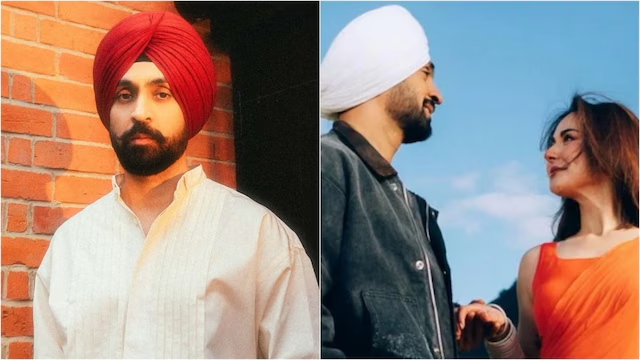Diljit Dosanjh unveils the trailer of Sardaar Ji 3, featuring Pakistani actors, choosing global art over political noise as backlash brews back home.
In a year marked by rising censorship fervour and audience fragmentation, Diljit Dosanjh’s career has become a quiet testament to creative steadfastness. From the censor hurdles faced by Punjab 95 to the film body’s backlash against Sardaar Ji 3, Dosanjh has confronted political backlash head-on—not through viral statements, but by letting his work speak volumes.
When the Punjab 95 trailer fell under the censor board’s magnifying glass, fans braced for a confrontation. The film’s evocative references to Punjab’s turbulent past—especially the heightened emotional framing of varsity student movements—triggered concerns among officials wary of reigniting political unrest. Yet Dosanjh refused to dilute his vision, and the film eventually cleared the boards with only minor cuts. His stance was firm: complex historical narratives still deserve their cinematic space.
Fast forward to Sunday, and the Sardaar Ji 3 trailer dropped with a bold spotlight on Pakistani talents—including Hania Aamir, Nasir Chinyoti, Daniel Khawar, and Saleem Albela. Diljit’s social media caption, Sardaar Ji 3 releasing 27th June overseas only. “Fadh lao bhoond dian lattan,” spoke volumes. It underlined his refusal to pander to nationalist posturing and affirmed his commitment to cross-border collaboration. The backlash was swift and sharp: the Federation of Western India Cine Employees (FWICE) demanded that the Central Board of Film Certification revoke its clearance and threatened Dosanjh’s expulsion from Bollywood.
Yet, unlike many who would lash out defensively, Dosanjh remained mum. His silence was louder than any statement. His choice to proceed with the overseas release—even as it is blocked from Indian theatres—served as his loudest message: his artistry and global audience matter more than provincial or identity-driven censorship.
Connected at their core, the Punjab 95 controversy and Sardaar Ji 3 opposition reveal a troubling warp in India’s cultural landscape—a tendency to weaponise film and music not for critique or reflection, but for control. Censors deem Punjab 95 sensitive; censors lash out at Sardaar Ji 3’s casting. Both controversies pivot on fear: fear of dissent, fear of difference, fear of softened borders in a sharply polarised world.
Within this unsettling terrain, Dosanjh’s impact is both personal and emblematic. His past success—transitioning from Punjabi icon to respected Bollywood star—has built a foundation sturdy enough to withstand political blows. He isn’t the star Bollywood creators can easily ignore, and that becomes his resistance.
At the same time, Dosanjh’s international fan base—Punjabi diasporas, Indian viewers, and now Pakistani audiences—reveals his significance. The rise of Korean dramas, Telugu and Tamil films, and global streaming series has already shown that audiences will gravitate toward substance and storytelling, not nationalist edicts. When Dosanjh chooses to shine a light on Pakistani performers and a complex Punjabi history, he banks his career on the intelligence and emotional capacity of his global viewers.
Sardaar Ji 3 may now be invisible in India, but its release overseas makes clear that censorship cannot confine art. Punjab 95 may have faced scrutiny at home, but it ultimately reached its screening destiny. Neither incident silences Dosanjh’s spirit—it amplifies it.
Yet the broader lesson isn’t just about stardom or defiance; it’s about narrative sovereignty. In a time where film bodies, censor boards, and political factions stretch their influence into cultural decision-making, Dosanjh’s career arc reminds creators and consumers alike: art must remain rooted in the creator’s truth and the audience’s choice, not in ideologies unfit for the screen.
From the hills of rural Punjab to the bright lights of Melbourne, Dosanjh’s journey charts a course for the modern artist—one who weaves identity, expression, and integrity into work that transcends geo-political gatekeeping. As Sardaar Ji 3 goes global and Punjab 95 reaches its audience, Dosanjh offers hope: that even in censorship’s shadow, artistry endures—and that the true battleground is not in statements of hate, but in the echo of stories that refuse to be silenced.
For your portal, this editorial underscores the complex relationship between politics, identity, and creative freedom—all through the lens of one artist boldly navigating it all.




